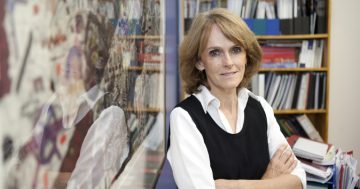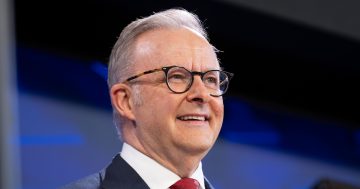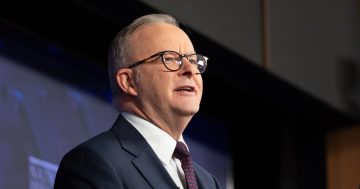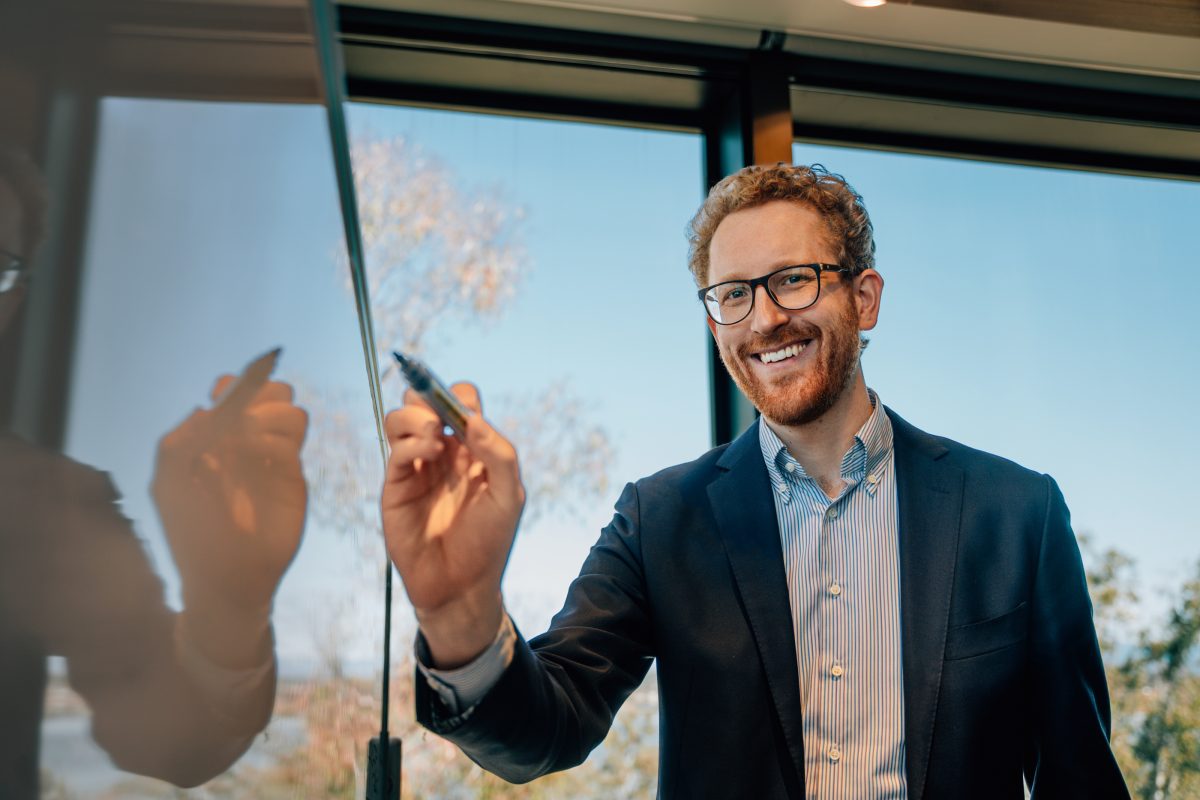
Dr Andrew Horsley co-founded quantum computing technology company Quantum Brilliance in 2019. Photo: Porter Novelli.
“A big thing for me throughout my career has been trying to take science and turn that into usable technologies.”
That’s no small feat when the science in question is quantum computing and the goal is to turn it from something that takes up a whole room (or even a whole building) and can only operate in temperatures close to absolute zero (-273.15 degrees Celsius) into “something smaller than a lunch box you can hold in your hands”.
And yet Dr Andrew Horsley is well on his way.
The researcher at the Australian National University (ANU) and co-founder of Quantum Brilliance has already created a special computing chip that brings down the size, weight, cost and power consumption of a quantum computer.
But more recently, he worked out a way to get them to operate at normal room temperature using synthetic diamonds.
Without getting too bogged down in detail, quantum computers use principles of quantum mathematics – or the behaviour of natural laws at the scale of atoms – to solve extremely complex problems in seconds, where it would take an ordinary computer literally thousands of years.
By making the quantum computer smaller and more usable, Dr Horsley hopes it can revolutionise the way we detect natural disasters, manage waste, manufacture items or deploy robotics.
“An application could be putting quantum computers in satellites to help in the early detection of bushfires or putting a quantum computer in a self-driving vehicle to help it drive more safely,” he said.

One of the quantum computers available from Quantum Brilliance that has “no need for absolute zero temperature”. Photo: Quantum Brilliance.
He founded Quantum Brilliance in 2019, and 80 world-class scientists and engineers now staff it. Among its products is a Quantum Development Kit, described as a “small, robust quantum computer that can be used outside of a laboratory”.
Developments like this have single-handedly earned Australia the reputation as a world leader in quantum computing, and this month, Dr Horsley won the $250,000 Prime Minister’s Prize for New Innovators in the 2024 Prime Minister’s Prizes for Science.
Now in their 25th year, these are described as “Australia’s most prestigious and highly regarded science awards”, celebrating “achievements in scientific research, research-based innovation and excellence in science teaching”.

Dr Andrew Horsley was awarded the Prime Minister’s Prize for New Innovators. Photo: Porter Novelli.
In a ceremony at Parliament House this week, Dr Horsley was “recognised for his ground-breaking innovations towards … unlocking a range of potential new applications for the [quantum computing] field in Australia and abroad”.
“I’m incredibly grateful and humbled,” he said.
“Learning how to lift quantum computing from an academic environment towards an everyday technology and experience the entrepreneurial journey has been very rewarding.”
Earlier this year, the Federal Government signed a joint $940 million investment with Silicon Valley’s PsiQuantum to build the world’s first commercially viable quantum computer in Brisbane by the end of 2029.
The deal falls under a new National Quantum Strategy, which aims to make Australia a top investor in quantum tech.
The night’s major award, the Prime Minister’s Prize for Science, went to Professor Matthew Bailes, an astrophysicist from the Swinburne University of Technology in Melbourne, for his “world-first discovery of fast radio bursts, which is helping to determine how much normal matter exists in the universe”.
The Prime Minister’s Prize for Innovation was awarded to Professor Andrew Wilks and Dr Chris Burns from biotechnology company Cytopia for inventing and commercialising a drug called momelotinib that is used to treat myelofibrosis, a rare form of blood cancer.
Professor Britta Regli-von Ungern-Sternberg from the Perth Children’s Hospital won the Frank Fenner Prize for Life Scientist of the Year for her “life-changing research into reducing risks associated with anaesthesia for children”, and Professor Tianyi Ma from RMIT University won the Malcolm McIntosh Prize for Physical Scientist of the Year for “ground-breaking work in renewable energy”.
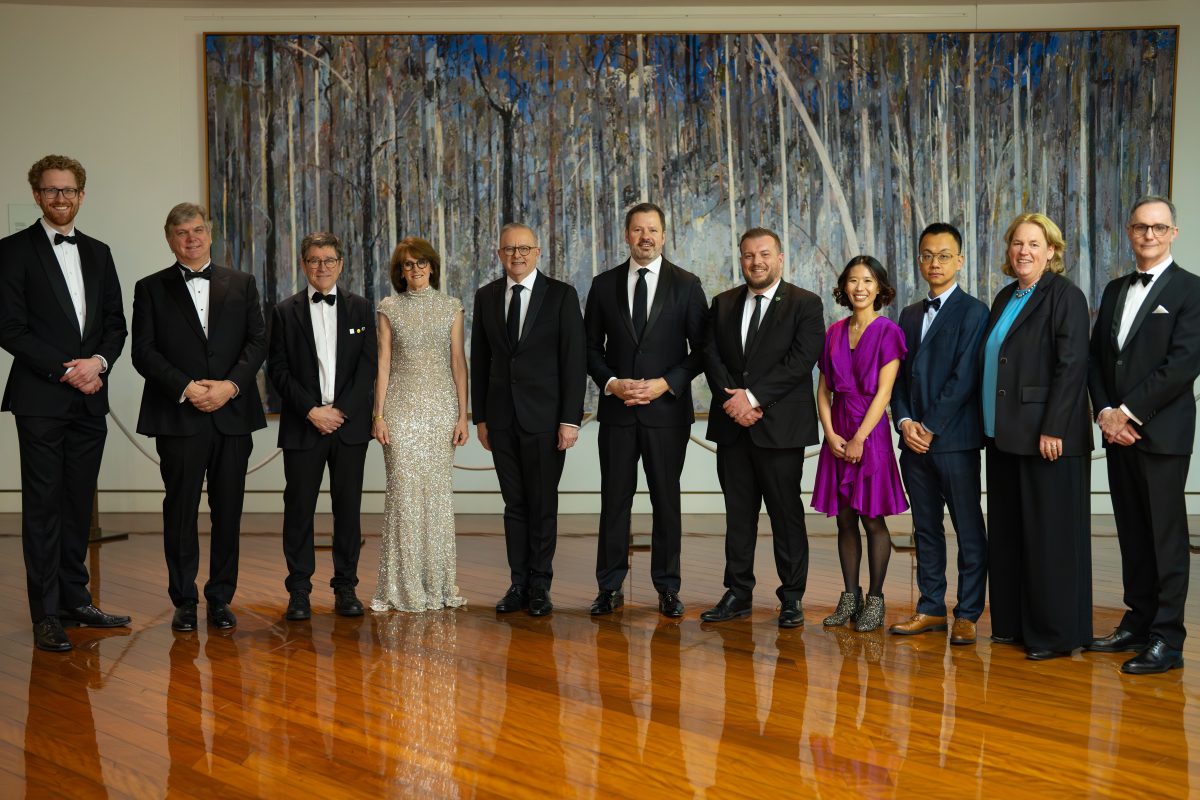
This year’s Prime Minister’s Prizes for Science winners and Prime Minister Anthony Albanese. Photo: Porter Novelli.
Two categories of the prizes also recognised the “critical role” primary and secondary school teachers play in “inspiring and encouraging students to take an interest, consider and pursue careers in science, technology, engineering and mathematics”.
These went to Daniel Edwards from Montello Primary School, Tasmania, and Alice Leung from Concord High School, NSW.
Prime Minister Anthony Albanese said this year’s winners revealed “just how bright the future is for Australian science”.
“On behalf of all Australians, I congratulate the 2024 prize recipients and thank them for their contributions,” he said.
Minister for Industry and Science Ed Husic had a message for “every young person out there”.
“Know that as a scientist, you can make a huge difference to the world and even the universe.”
Original Article published by James Coleman on Riotact.


